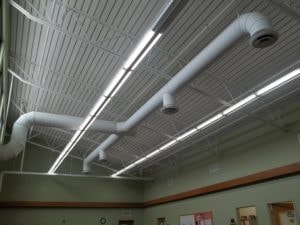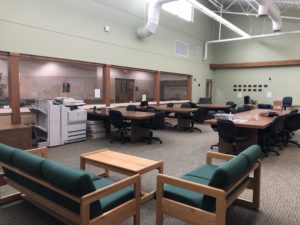If you’re interested in science, then you probably go into the Olin Science Building almost every day. But how well do you really know this science building?
Dr. Edward Zalisko is a biology professor in the science building. In the early 2000s, he was division chair and helped out with the initial planning for the building. At the time, Zalisko among others toured other colleges around the area with new science facilities and started the planning. “We wanted to build a building so that the building itself could be a teaching model for the people who wanted to build good buildings,” Zalisko stated. The team wanted to build something that was environmentally sound.

They started with the direction of the building. Most buildings are designed vertically because of limited space, but they were able to make the science building spread horizontally. This allowed greater safety for students if an emergency situation were to arise. “Safety and the environmental nature of our design were two things that we had the leg up,” Zalisko said.
As for the environmental benefits of the building, the list is endless The rooms have modular furniture and lab benches which allow professors and students to adapt their labs for different lectures or experiments. In the building, there is a heat transfer system. Zalisko explained,“In the winter time, as the air leaves the building and the pressure is coming in all the time, the heat gets transferred, so a lot of that heat is not lost by just shooting it outside, instead it comes in. The reverse then is the same for the summer time.” There are also large windows all over the building to let in natural lighting.

Dr. James Bray is a biology professor in the science department. He talked about the geothermal system that powers offices and the “fish bowl” area. The geothermal system is powered by a geothermal well outside the building. Dr. Bray explained, “The ground’s temperature is always about 56 degrees, so if it’s really hot outside, you’re taking that water and circulating it through the building picking up all that heat. About the time you push it back to the ground, it comes out the other end at 60 degrees.” With the geothermal system, the building is no longer dependent on air conditioning, just on water pumping through the ground. The entire building is also powered by an EMS or energy management system. The EMS is a system that manages the energy consumption of the building. The computer in the Physical Plant that does this management can turn on and off lights, set temperatures, and many other things.
As for the future, solar panels will be utilized for the entire Blackburn campus. “We have to wait and see how the whole system works,” Zalisko stated, “…but the estimate is that we will be close to generating, on average, all the electricity the campus would use.” According to Bray, if everything goes according to plan, these solar panels will make their way to Blackburn within the next year.

